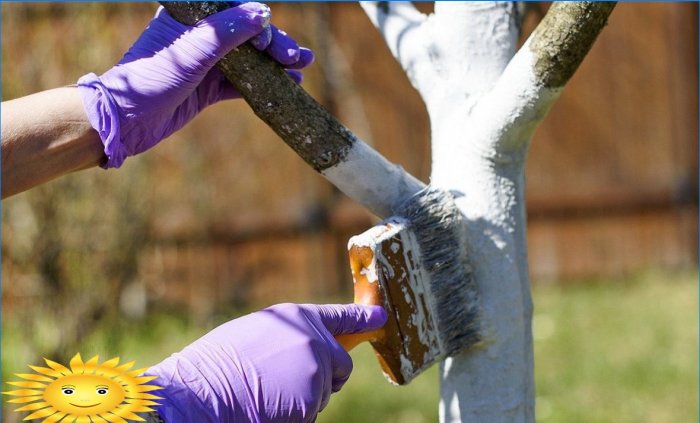
The bark of a tree itself is its reliable protection, literally armor, designed to protect the most important parts of the plant. But sometimes bark alone is not enough for a tree to feel good and develop normally. Whitewashing of trunks is designed to perform such important functions:
- Protect against insect pests that like to settle in bark.
- In winter and spring, temperature changes can lead to cracking of the bark, the tree becomes vulnerable to diseases and pests. Whitewashing reduces this chance..
- In addition, in the spring and on clear winter days, a tree that remains without leaves can be sunburned. White whitewash repels sunlight, so the risk of burns and bark damage is significantly reduced.
- Frost holes are also a risk for the tree, whitewashing helps to reduce it and preserve the integrity of the bark, which is very important for the development of the plant.

As you can see, almost all whitewashing functions are aimed at protecting the tree in winter and early spring..
Important! Do not neglect the autumn whitewash! Prepare your garden for winter by protecting plant trunks. In the spring, whitewashing will rather be a decorative function, although, of course, it will also protect from insect pests..
Despite the fact that specialized stores now have a selection of paints for garden trees, for example, water-dispersible and water-based, lime is still the most popular option for whitewashing plants. Ready-made compositions, we admit, last longer – up to two years, less washed off by rains. You don’t need to prepare the solution – you bought a can of paint and use it. But among experienced summer residents, lime compositions remain in first place due to availability, very low price, ease of use.
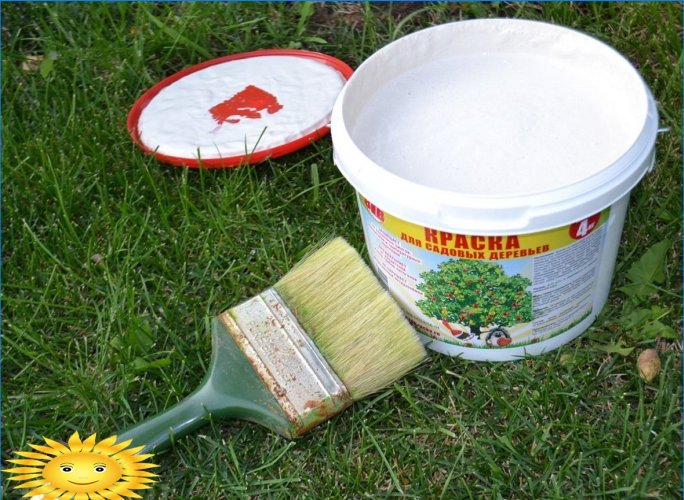
It is simple to make a composition for whitewashing: you should take quicklime, that is, limestone in lumps, and fill it with water. The proportion is approximately 1: 1. The process itself is accompanied by the release of heat, the mixture bubbles, boils.
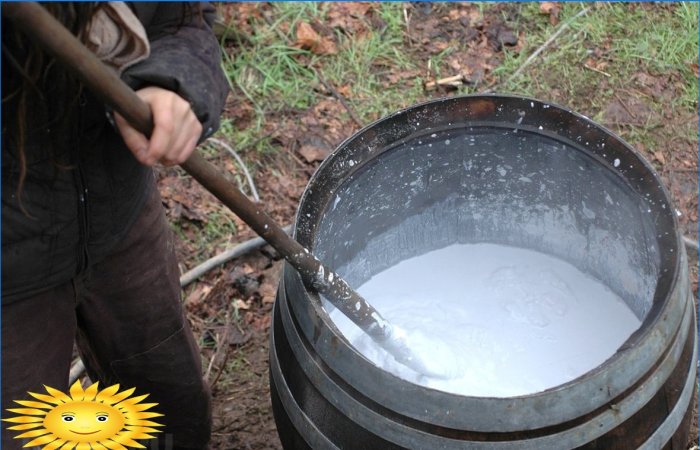
Important! In the process of slaking lime, you need to be very careful, you should wear gloves and goggles. It is best to buy already slaked lime, which is inexpensive and immediately ready for dilution with water.
Slaked lime is diluted with water for whitewashing: 2 kilograms of fluff will require 10 liters of water. Summer residents are advised to add about 300 grams of copper sulfate to enhance the protective properties of the solution. Fresh slaked lime fights best against lichens, fungi and pests, so the solution must be prepared about two hours before whitewashing. It will take a day – the effect will be lower.
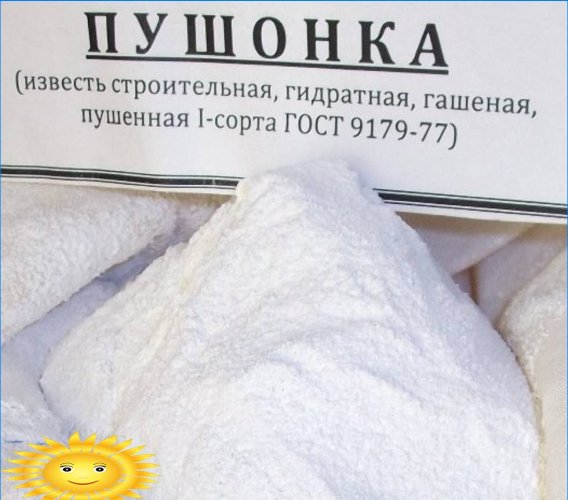
Important! To whitewash young trees, use a weaker lime mortar, just add a little more water.
The process of whitewashing trees consists of the following simple steps:
- First, you should clear the trunk of mosses, lichens, exfoliated old bark. Young trees usually do not have such problems. Care should be taken so as not to further damage the bark. You can act in cracks with just a sharpened sliver or a blunt knife, and along the trunk with a hard washcloth.
- Then it is advisable to disinfect the cleaned barrel, for example, with 3-5% copper sulfate solution or ash-and-soap solution.
- If, after cleaning, there are wounds on the bark, use ready-made garden pastes or putties to treat them..
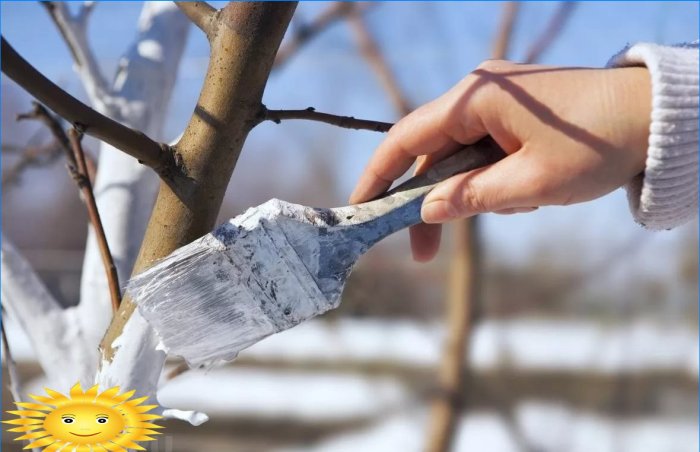
Now you can go directly to whitewashing. You will need a wide paintbrush, paintbrush, or wash brush. You can take a spray gun if the volume of work is large enough. Of course, it is necessary to dress “according to work” and prepare comfortable gloves.
As for the height of the whitewash, there is still controversy in this area. Someone simply whitens large trees to a height where a hand can reach, including the base of thick lower branches. Someone whitens the trunk to the lower branches. Other summer residents whiten young trees up to young shoots, including the lower branches. Some say the optimal whitewashing height is 1.5 meters..

According to experts, the height of the whitewash is not so significant. The most important thing is that the trunk and all thick, large branches, the bark of which can crack in the spring due to temperature changes, are whitewashed. The lower, skeletal branches whiten about 1/3 of their length. Let’s take this recommendation as a guide to action and proceed to the autumn whitewashing of trees.!

What are the specific benefits and features of whitewashing tree trunks in a garden plot? Does it help protect against pests, sun damage, or any other factors? How often should one perform this task, and are there any specific techniques or materials to use for the best results?
What are the specific benefits and features of whitewashing tree trunks on a plot in the garden? Are there any potential drawbacks or risks associated with this practice?
Whitewashing tree trunks in the garden offers several benefits and features. Firstly, it helps protect the tree bark from direct sunlight, which can cause sunscald and cracking. Additionally, whitewashing acts as a barrier against pests and insects that may harm the tree. It also reflects sunlight, reducing heat stress and preventing temperature fluctuations. This practice is particularly helpful during winter months, as it prevents freezing and thawing cycles. Whitewashing can enhance the aesthetic appeal of the garden by creating a neat, uniform appearance.
While whitewashing is generally beneficial, there are a few potential drawbacks to consider. If the whitewash mixture is not properly prepared, it can hinder the tree’s ability to breathe, resulting in rot or fungal diseases. Furthermore, if the paint used contains harmful chemicals, it may harm the tree and surrounding plants. To minimize risks, it’s crucial to use non-toxic whitewash and apply it correctly, avoiding excessive coverage. Regular inspection is necessary to ensure the tree remains healthy and the whitewash is doing its job effectively.